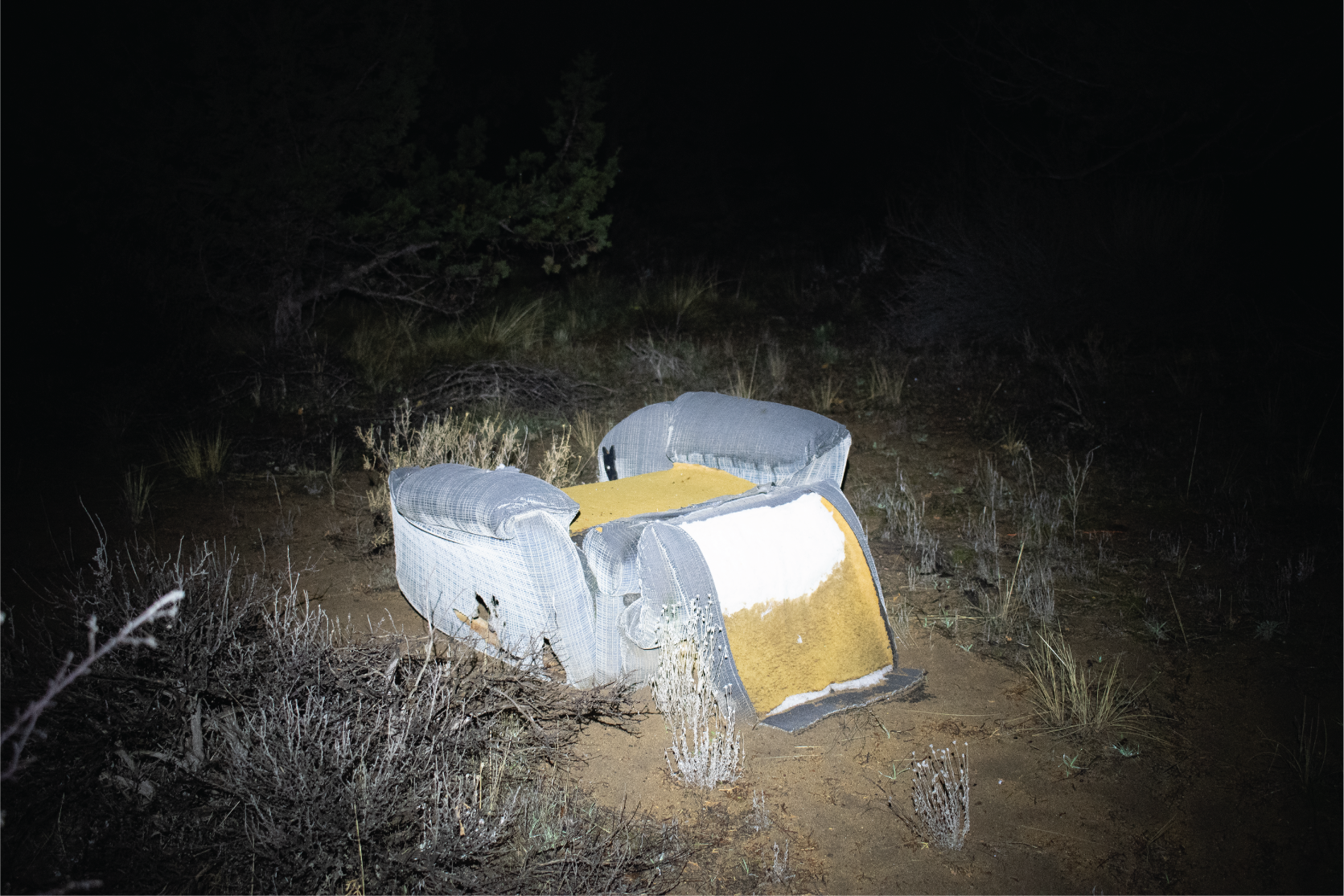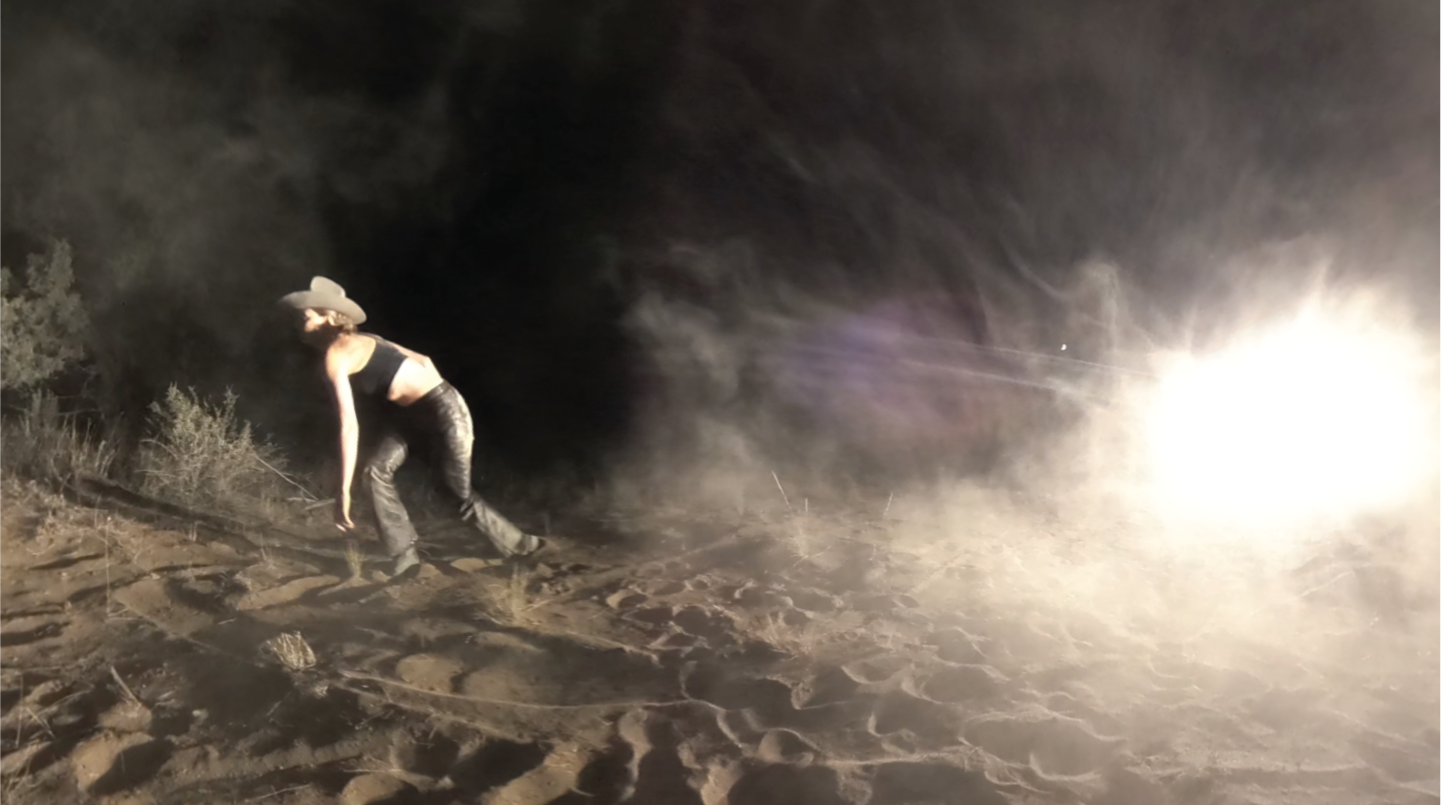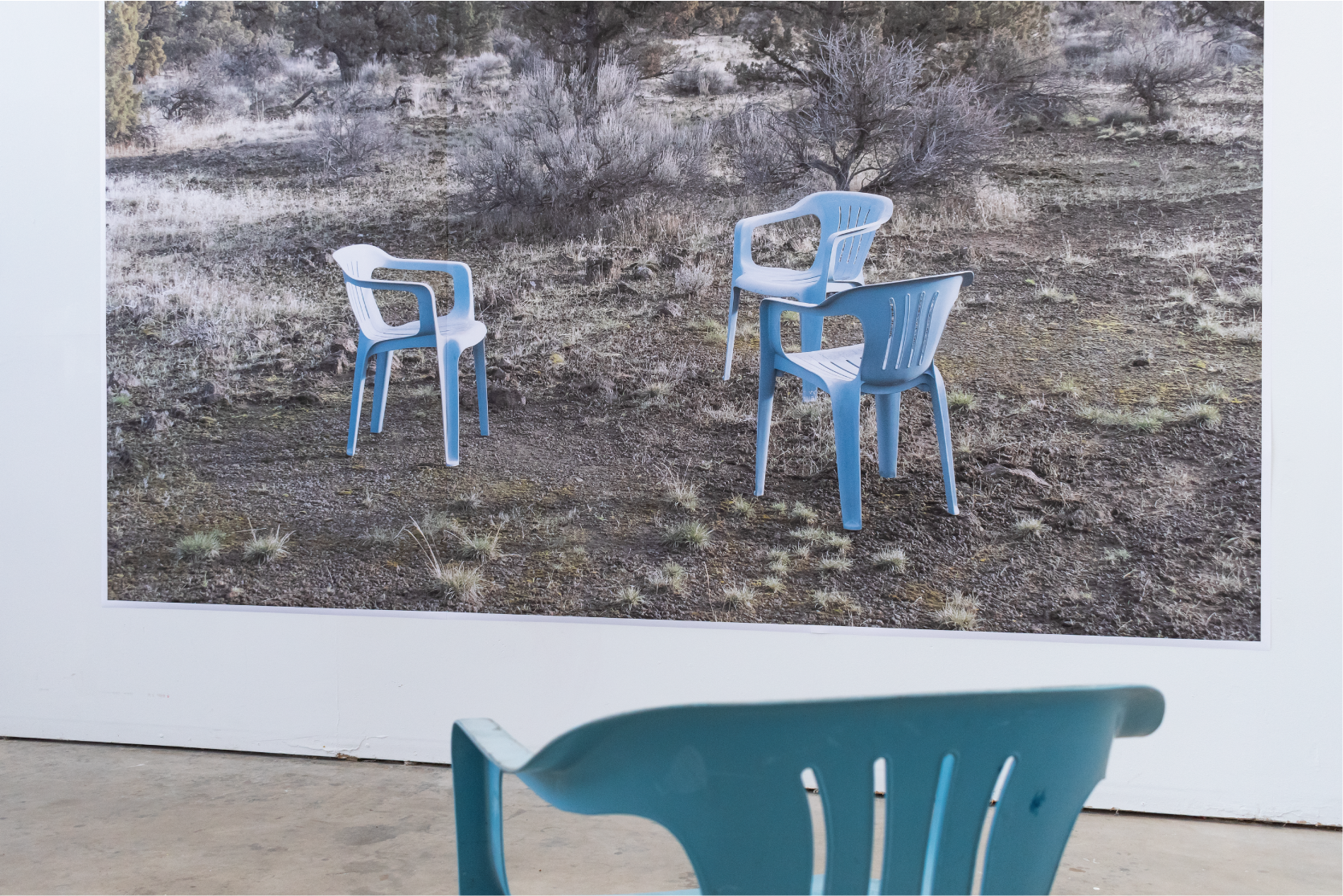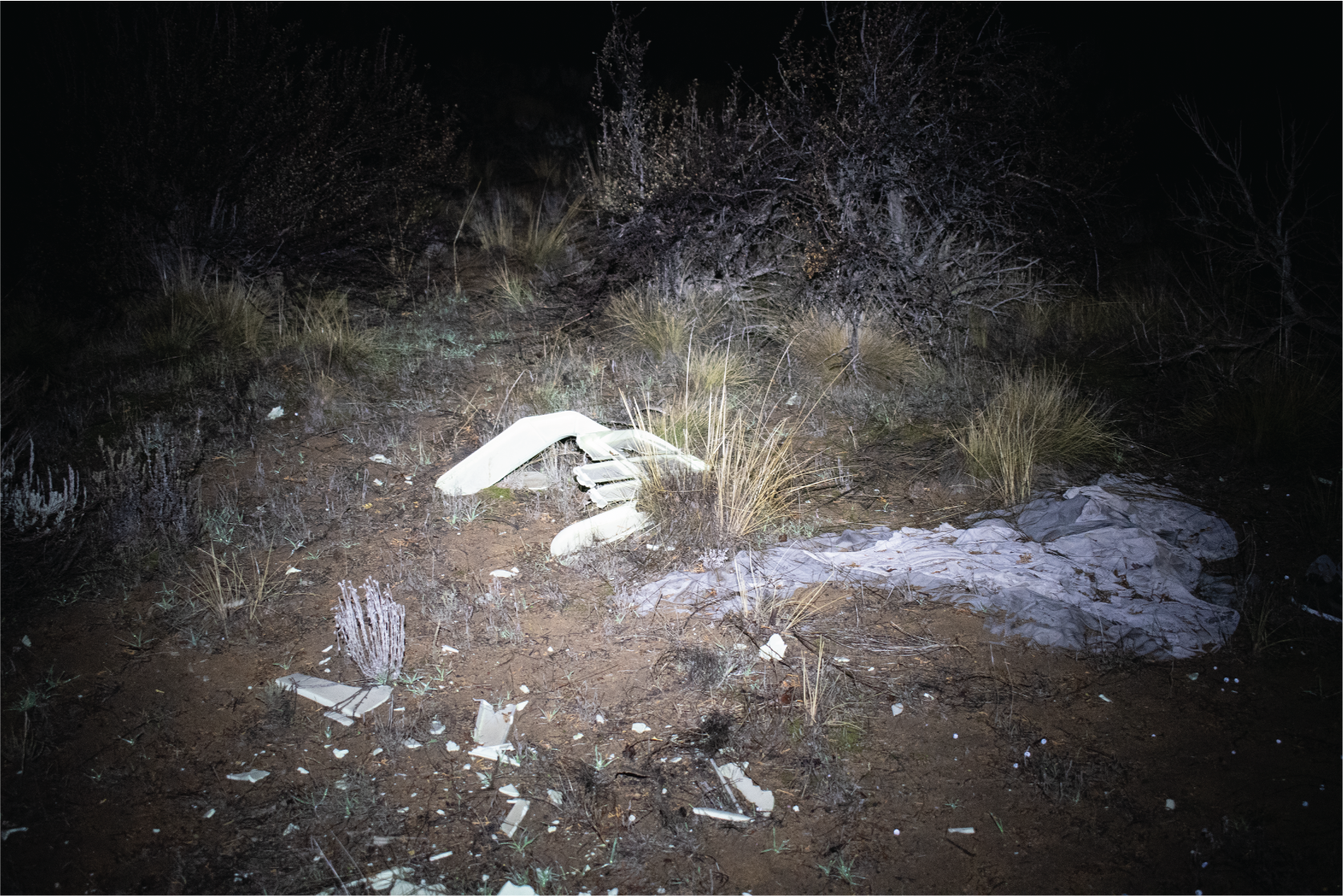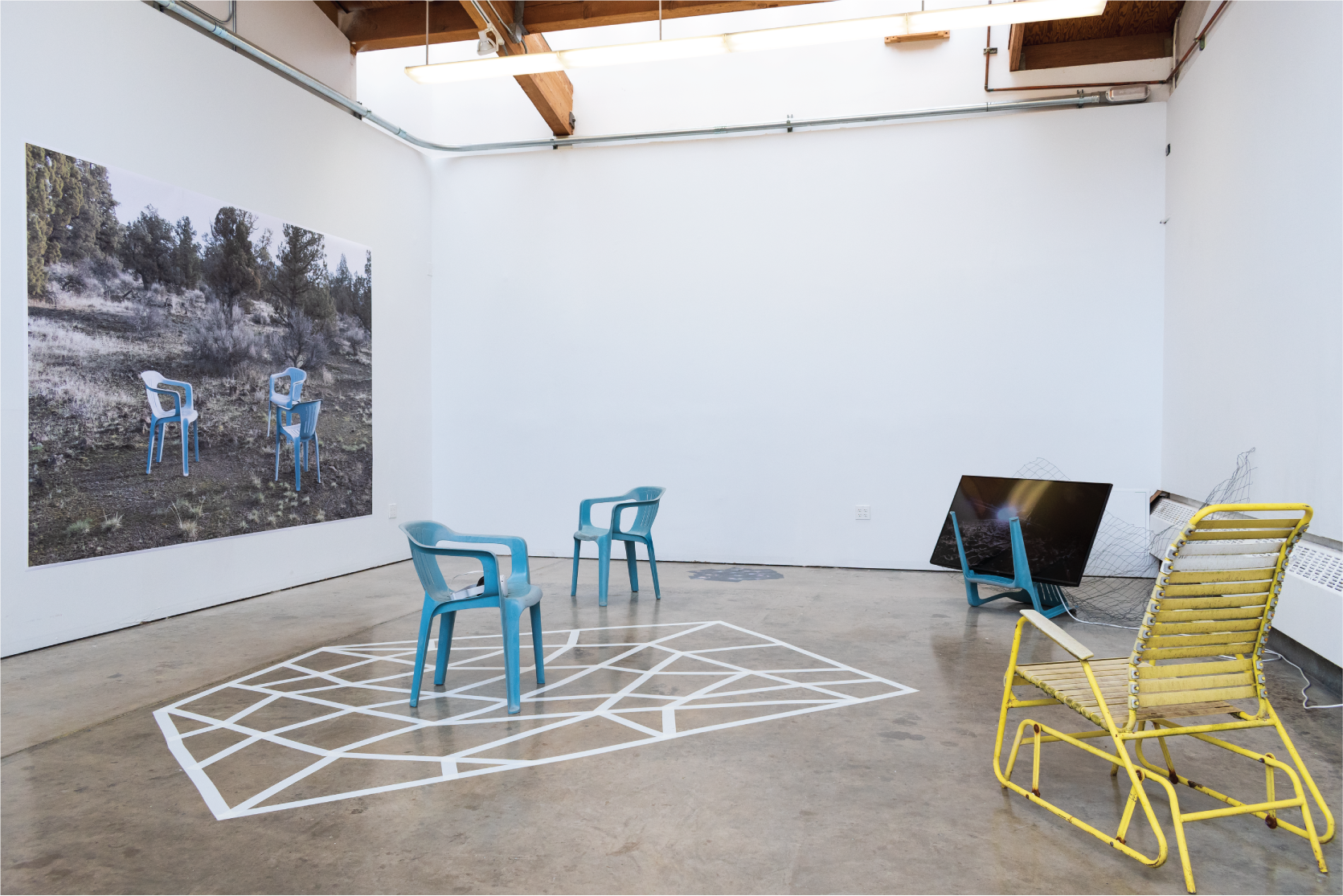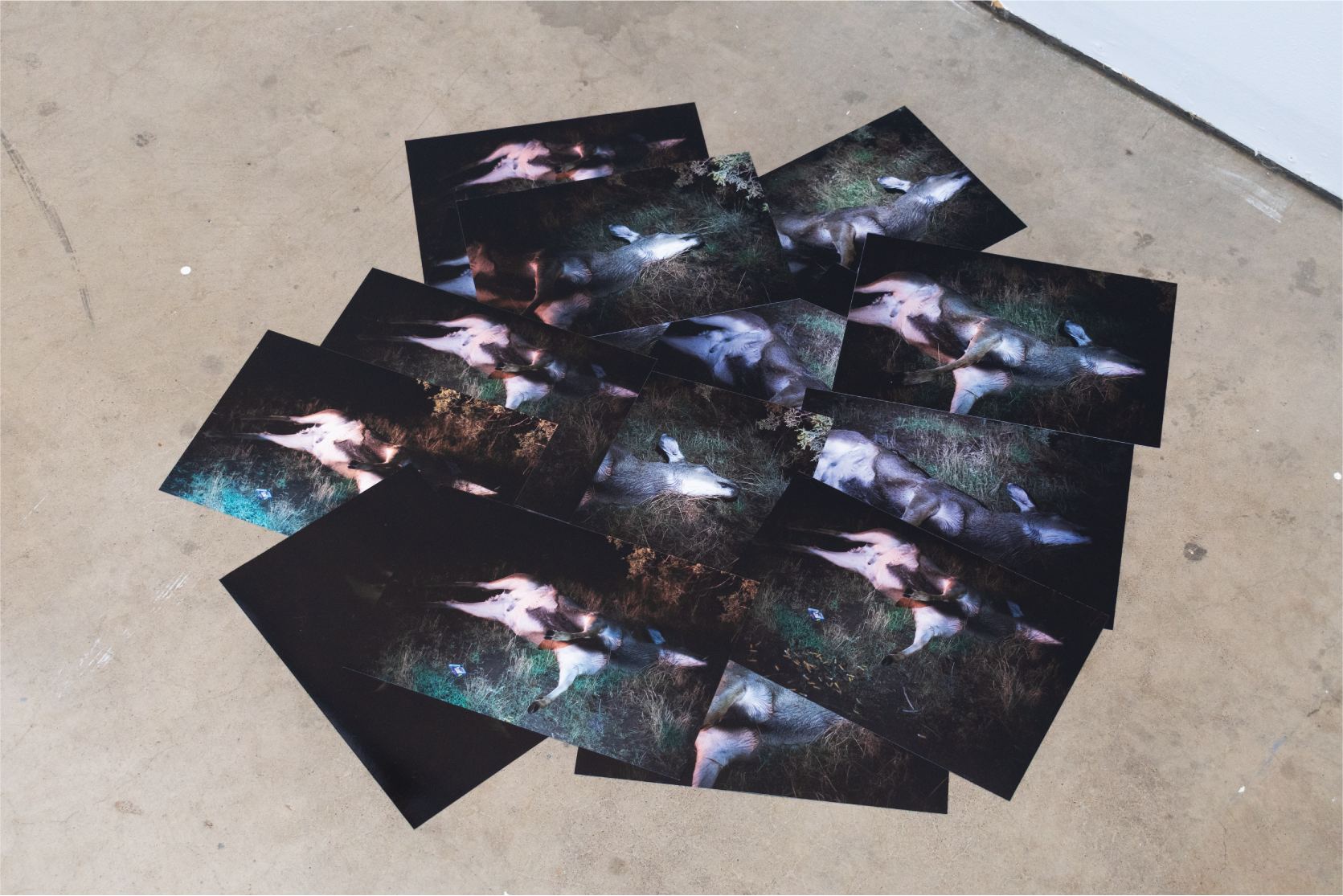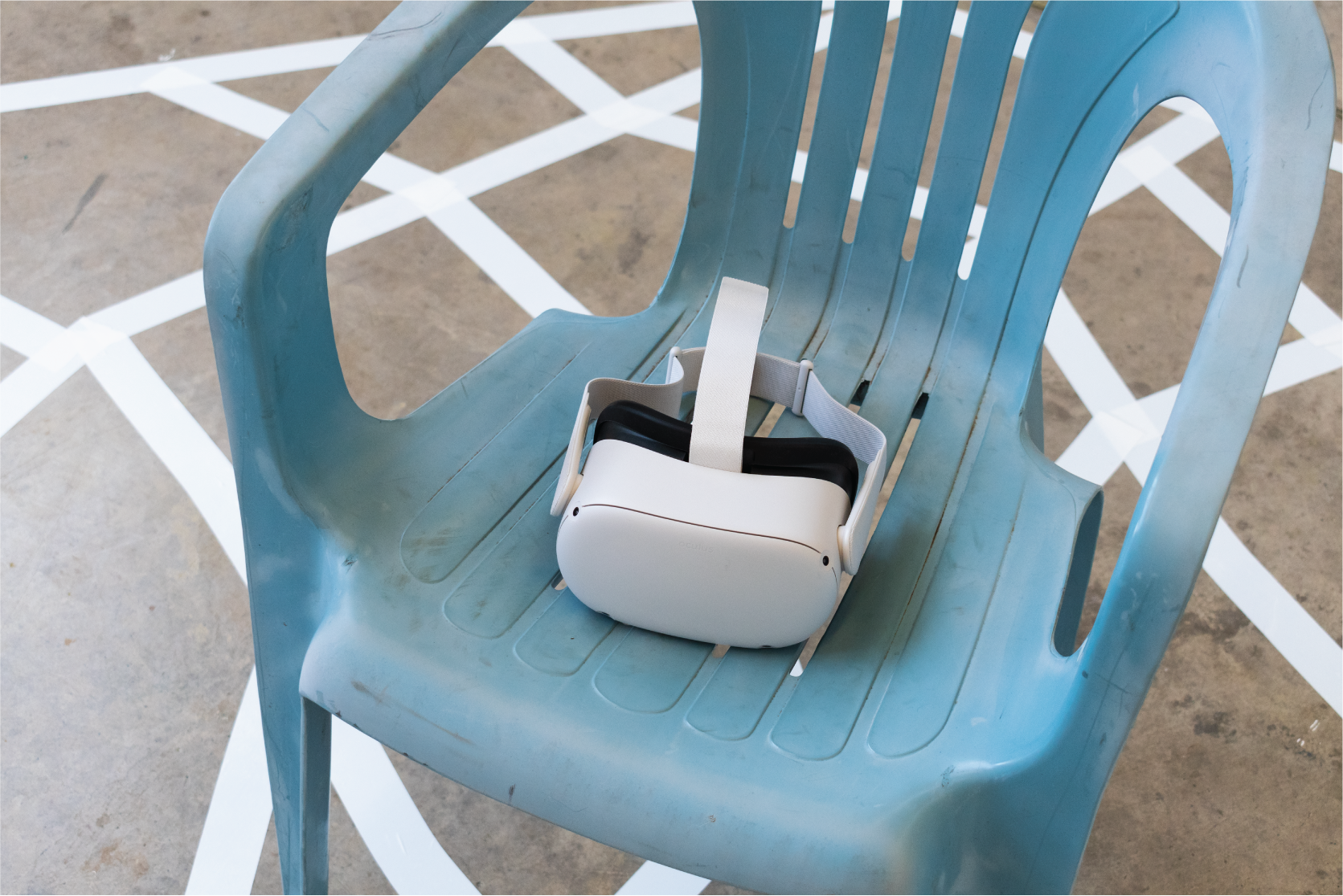Agnese Cebere is an interdisciplinary artist working across video, photography, performance, and installation. She is concerned with the philosophical implications of perception and cognition in relation to embodiment and technology, as well as the performativity of the art object in the space of the exhibition and the implementation of the kinaesthetic field of both performer and audience. Whether using costume or camera to enact an altered perception (to feel differently), her work stems from improvisation and found objects.
Tire tracks run across the hilly plain, weaving in-between the juniper and sagebrush. Mounds of trash, the odd relic here and there: an iron grate, a pile of shoes, broken glass and dismembered furniture, stripped animal bones shining white in the moonlight. The sound of howling coyotes and ATVs mingle with the rumbling of the highway, whose sound carries far across the open space.
The desert is the stage of Westerns. It is a place of Manifest Destiny for a colonial expansion, a place of damnation and transcendence, where cowboys are actors and actors take on the gestures of cowboys. At the same time, it is one of many locations of Native American survivance, where they continue to weave the past and the future into the present.
In the contemporary world of the western United States, the desert is a place of recreation that retains some of its outlaw nature. It seems to be a place that allows for transgression. This desert embodies freedom without responsibility, freedom from normal rules of conduct. There are traces everywhere. It is not a pristine wilderness; our messy lives are evident here and we can only guess at who has come before us. Regardless of the persistent remnants of human activity there are rarely any humans to be seen. The ground is dust and volcanic rock, with patches of dry grass. Rusted pieces of metal—wire mesh, cans—blend into the colors of the landscape. Fragments of plastic chairs mimic the bones strewn around, stand-ins for the dead, just as chairs themselves stand in for the body. Beyond a binary of image and reality, the desert traces are phantasms of the neither living nor dead. The real is in question as the temporal flux of past, present, and future are felt as one. Here, time feels endless, like being fully immersed in the virtual space of a fiction.
Landscape and land become enmeshed in our minds, even though landscape is already a cultural construction and the view through a VR headset simply an expression of that by technological means. Virtual reality, like linear perspective, is predicated on the single viewer. It is an egocentric technology narrated in the first person, yet to gaze is to be captured, enraptured by what is seen, wrapped up in it and entangled. The power of the gaze can be subverted via this unintended backchannel of affect, and control reversed. We look to possess but are possessed in turn. To be immersed is to live within the structure and not just look at it from a distance, to inhabit the wire mesh that holds it all together, hollow as it is. Control is part and parcel of this illusion which determines and contains yet allows us to build and imagine. In my installation, an empty chair performs the posture of the seated body and becomes a device for self-projection while another may hold the inert physical body of a viewer. As muscle tone slackens, the virtual body moves further afield.
